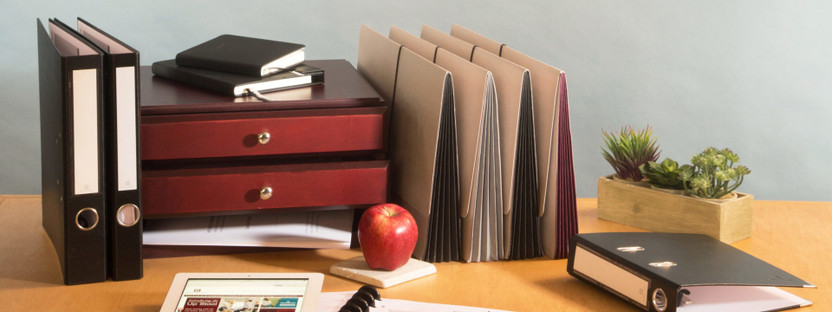How to Implement a Year-Round Tax System
Posted by Bindertek on Feb 22nd 2018
Ask Bindertek:
I know we do taxes once a year, but I’ve always got a lot of paperwork flying my way during the whole year. Any thoughts on how to stay organized through the whole year?
When tax season rolls around, it can be a scramble to get everything you need while juggling work responsibilities, family time, and other obligations if you aren’t prepared in advance. To avoid the tax time-crunch, invest a few hours in setting up an organization system that will keep your tax paperwork on track year-round.
Step 1: Plan in Advance
Be prepared for tax season by planning to ensure you don’t forget any important dates. In January, when setting up your yearly planner, write down the due dates for quarterly estimated taxes, the deadline for filing an extension, when to file a Foreign Bank Account Report, and any other applicable deadlines. If you use an accountant, give yourself a schedule of when they’ll need all your tax paperwork to complete your return on time and stick to that as you gather your documents.
Step 2: Implement the 3 Folder System
Avoid a backlog at the beginning of each year by taking care of your documents year-round as they come in. This method will reduce your stress and will cut down on the possibility of lost paperwork. Experts recommend a minimum of three folders for your incoming documents: Income, Investments, and Expenses & Deductions. Add extra folders for any unique tax needs you might have. As documents arrive, sort them into the appropriate folder rather than resorting a pile you promise to deal with ‘later’.
Step 3: Dedicate to Weekly Logging
Each week, set aside time to process the papers in your folder system. Depending on how you work, this could mean entering the necessary information into bookkeeping software, condensing receipts into an expense report for your employer, or logging information into an informal spreadsheet. Once processed, documents can be moved from your folder system to a binder for a long-term storage solution.
Step 4: Organize Your Binder
An ideal way to start is to grant each tax year its own binder. Binders are ideal for keeping tax documents securely organized and are great for transport, like when you need to meet with your tax preparer. Choose from a range of binder accessories like index tabs, dividers, sheet protectors, pockets, and more to create a binder that uniquely works with your tax needs. When tax season ends, file the whole binder on a carousel shelf or remove the contents and store in an Archive File Box for future reference.
With these four easy steps, you’ll soon be settled into the rhythm of your new intake system and can enjoy a stress-free tax season next year!

